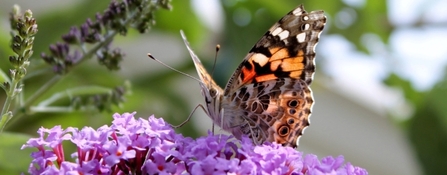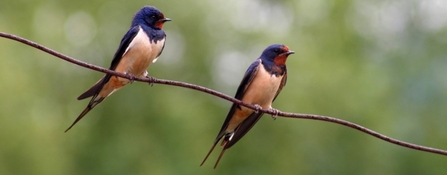Between the 12th July and 4th August this year, Butterfly Conservation ran a nationwide citizen science project called the Big Butterfly Count. This project encourages people to sit out in their garden, park or local green space and spend 15 minutes counting and recording the species of butterflies they see. This year, before the project was even over, Butterfly Conservation released a statement about the distinct lack of butterflies. Apparently people were only recording half the number of butterflies that they were spotting last year. The results aren’t even finalized yet, but it seems that this year is on track to the quietest year since the Big Butterfly Count began. Our butterflies weren’t doing well already with 80% of UK butterfly species in decline since 1970 and it seems like this year, things have gotten even worse. So, what’s happened?
Where have the butterflies gone?

Cast your mind back a few months, to the extremely wet winter and spring we had this year. You might remember the days of heavy rain and the extremely muddy conditions underfoot. The winter was the wettest in 130 years and things didn’t improve much as we moved into spring. According to the Met Office, this spring was the wettest since 1986 and the sixth wettest on record! It is likely that this very wet weather played a big part in the reduction of insect and butterfly numbers.
However, the invertebrate decline can’t be blamed on just one wet year. As a young lad, I remember my dad driving me down to Cornwall during the school summer holidays and seeing so many splatted insects on the car windscreen. The wipers would uselessly smudge them around and eventually we would have to pull over to remove them. This simply does not happen anymore. The number of insects splattered on license plates has actually been studied and there has been a staggering 78% decline since 2004.

The decline in insects is being felt across the ecosystem. Not only do they provide invaluable services such as pollinating our crops and breaking down our organic waste, insects also provide a food source for so many different species of wildlife. Globally beloved birds such as swallows and swifts rely on catching flying insects. One swift can catch up to 1,000 insects in a single mouthful to feed their hungry chicks. As we lose insects, we lose the animals that feed on them. It is a huge factor contributing to swifts and swallow populations declining by almost 50%. Hearing a screaming swift and watching a swooping swallow bring me just as much joy as watching a gliding butterfly. It’s heartbreaking to think of what’s being lost. What will a summer evening look or sound like in a few years time?
What can we do?
We can all play an important role in helping nature recover and looking after the little guys, our insects and pollinators, is a great way.
Here are few simple things that you can do to help:
- Avoid using pesticides wherever possible.
- Plant pollinator friendly plants and wildflowers in your garden, school, office or community garden.
- Leave areas of your garden to grow long and wild.
- Sign petitions and join campaigns
- Become part of Team Wilder to get resources and inspiration for taking action for nature
- Help spread the message and talk about insect decline with your friends, families and communities. Offer help and support those who want to help nature.
We can bring back our butterflies and support swifts and swallows simultaneously! Together, we can make a difference. Find out more about how you can help insects on the link below.

